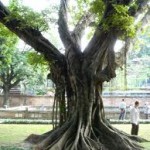 When teaching a Bible study, there are two methods that are prominent. The first is a verse by verse study in which an entire passage or book is examined. The second method is a topical study. Bibles have been edited to accomodate this method of teaching.
When teaching a Bible study, there are two methods that are prominent. The first is a verse by verse study in which an entire passage or book is examined. The second method is a topical study. Bibles have been edited to accomodate this method of teaching.

For many years, it was the only method about which I was aware. Nave’s Topical Bible was a jewel for studying to teach. The commentary was compiled by Orville J. Nave who was an Army chaplain. Published by Thomas Nelson, Nave’s goal was to catagorize every topic found in the Bible and note the Biblical references. First published in the early 1900’s or late 1800’s, there have been at least 7 revisions. This reference book is still sold and valued by teacher of the Scriptures all over the world.
Most pastors/teachers/preachers will use the topical methods often in preparing their sermons. Topics can range from “the blood sacrifice” to “trees of the Bible.” The liturgical calendar is arranged by topics, taken from annual events, such as the nativity and the crucifixion.
While most purist who believe that verse-by-verse expositions are the only way to teach the Scriptures will disagree, an exegesis of the Scriptures can be done through a topical study of the Bible. The idea is to find the meaning that the writer of the Scriptures meant for the passage and discover how it applies to the lives of the reader.

There is a wonderful hymn written by Michael W. Smith, “Ancient Words.” The chorus is
Ancient words ever true
Changing me, and changing you.
Oh, let the ancient words impart
A moving, quick incisive dart.
Holy words of our Faith
Handed down to this age.
Came to us through sacrifice
Oh heed the faithful words of Christ.
 Holy words long preserved
Holy words long preserved
For our walk in this world.
Courage, peace, a loving heart
Oh let the ancient words impart.

